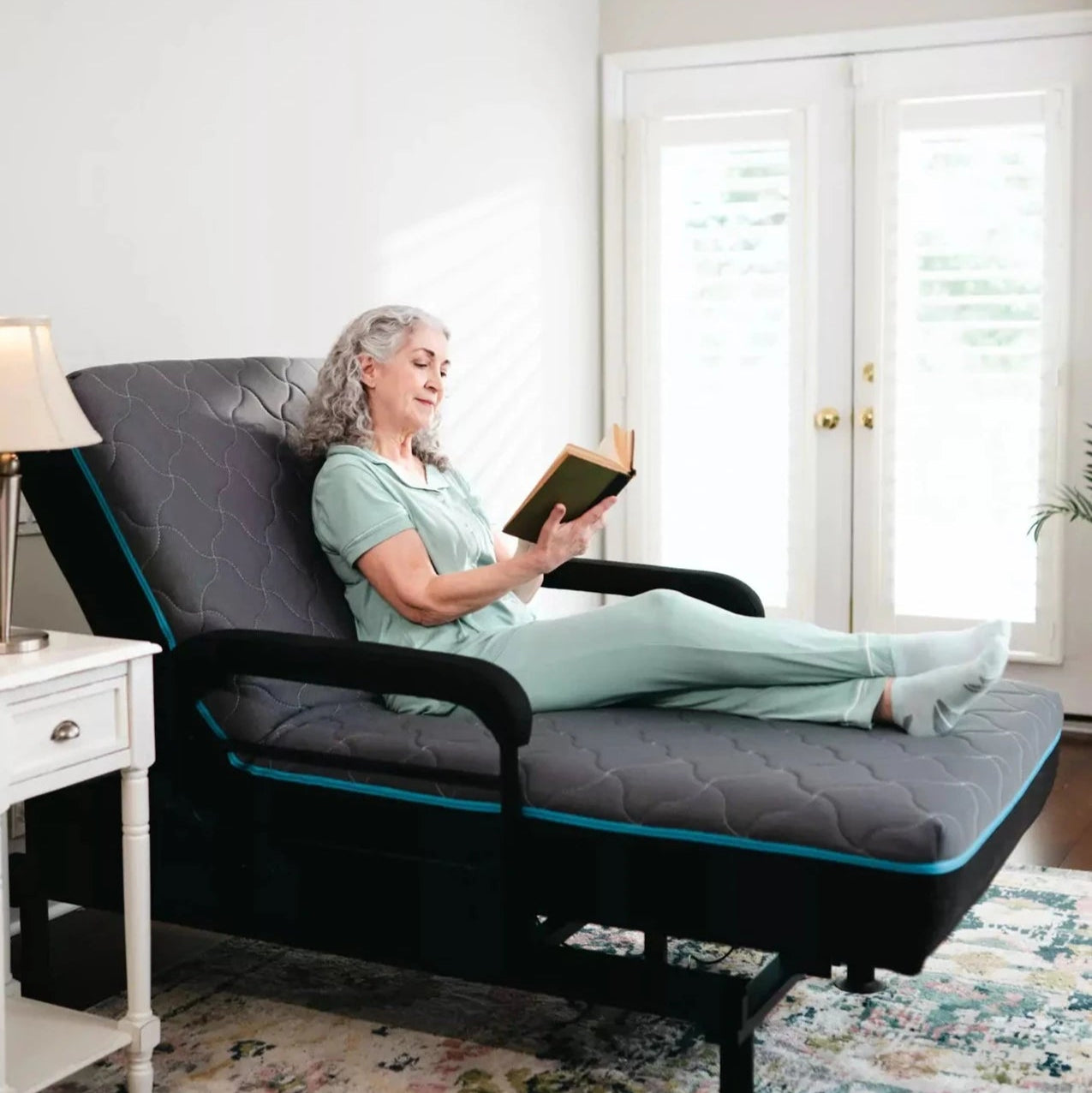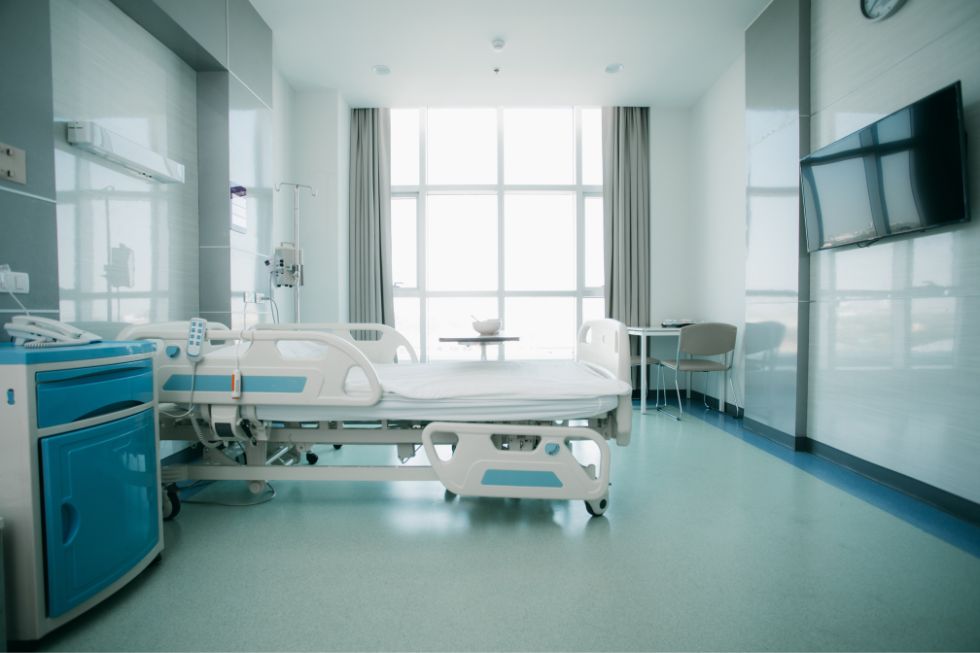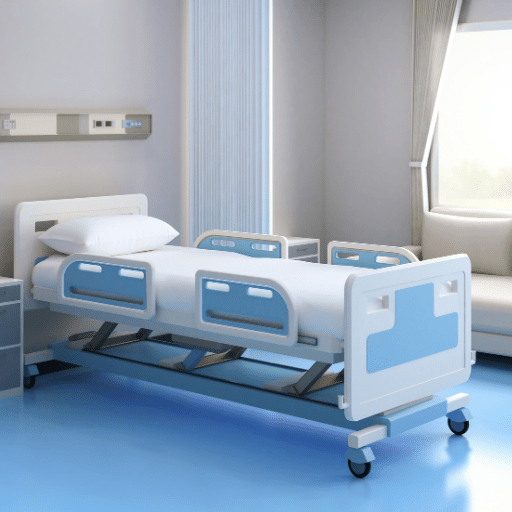Facts About Hospital Beds For Home Use Uncovered
Fascination About Hospital Beds For Home Use
Table of ContentsRumored Buzz on Hospital Beds For Home UseThe Best Strategy To Use For Hospital Beds For Home UseThe Main Principles Of Hospital Beds For Home Use Hospital Beds For Home Use Can Be Fun For AnyoneFascination About Hospital Beds For Home UseThe Ultimate Guide To Hospital Beds For Home UseExcitement About Hospital Beds For Home Use
There are 3 main types of health center beds: manual, semi-electric, and fully-electric. These beds make use of hand cranks to change the bed's height and raise and lower the head and the foot.
Semi-electric beds have an electric motor to increase and lower the head and foot sections of the bed (hospital beds for home use). Full-electric beds have an electric motor that can raise the head and foot sections of the bed as well as the whole height and positioning of the bed.
Some Known Details About Hospital Beds For Home Use
There are numerous kinds of health center beds, each designed to satisfy particular patient requirements. Below are some usual kinds: This is the most common kind of medical facility bed, developed for basic clinical use.
Lower to the ground than a conventional bed. This kind of bed is developed for bigger people, with a wider structure and higher weight capability than a basic bed.
This sort of bed is designed for critically sick people who need open tracking and specialized clinical devices such as ventilators and mixture pumps. This sort of bed is designed for use throughout labor and delivery, with adjustable settings and features to support the mother and infant throughout the birth process.
4 Simple Techniques For Hospital Beds For Home Use
Several function and the accessories carry out broadening traction to different parts of the vertebra and the extremities without relocating the body. These are simply a few instances of the sorts of healthcare facility beds readily available. The details kind of bed made use of will depend upon the client's problem, medical demands, and other factors.
Below is the important things you require to recognize. A one-function medical facility bed is a medical bed that allows a patient to move just the head or foot area up or down. A 2 feature medical facility bed generally describes a sort of medical bed that has two flexible functions to help people in healthcare facilities or treatment facilities.

A Biased View of Hospital Beds For Home Use
A 7-function ICU bed is a sort of medical bed that offers numerous flexible functions to support critically unwell people in a critical care unit (ICU) (hospital beds for home use). The seven features typically include: Back-rest modification: The backrest can be gotten used to numerous angles to assist the person stay up or rest pleasantly
Height modification: The bed can be elevated or reduced to make it much easier for clients to enter and out of bed, and for caretakers to supply care. Trendelenburg setting: The whole bed can be tilted to promote blood circulation and circulation in the body. Reverse Trendelenburg setting: The bed can likewise be slanted in the contrary instructions to promote blood flow and blood circulation in the top body.
1. What Dimension is a Health Center Bed? 2. Exactly how Much Does a Hospital Bed Expense? 3. Why Do Hospital Beds Have Side Bed Rails? 4. What Are The Main Medical Facility Bed Components?. While even more economical than electric designs, these beds need physical effort for modifications. The primary benefits of hand-operated beds are their affordability and reliability, as they do not count on electrical energy. However, the demand for hand-operated effort can be a limitation in situations where quick changes are necessary or where caretakers face physical challenges.
The Buzz on Hospital Beds For Home Use
They are appropriate for patients who need minimal repositioning look these up for comfort or clinical needs. Semi-electric health center beds provide an equilibrium of guidebook and electric controls. The head and foot sections are commonly adjusted with electric controls, while the elevation is changed manually. These beds provide a perfect center ground in between manual and fully electric options, using ease of usage without the full cost of electric models.
Semi-electric beds are fit for clients who require modest changes to the head and foot sections yet can handle without constant height changes. This makes them a cost-efficient solution for those looking for convenience and ease without the need for consistent repositioning. Totally electrical healthcare facility beds include electrical controls for seamless adjustments to the height, head, and foot sections.
Specialty health center beds, such as ICU beds, long-lasting treatment beds, and bariatric beds, are carefully developed to deal with certain medical requirements. These beds offer tailored care for diverse individual teams, boosting both results and convenience. In the complying with areas, we will certainly discover the major types of specialized medical facility beds, detailing their particular advantages and applications.
With years of experience in producing electric direct actuators - hospital beds for home use click this link and close collaboration with the health care sector, TiMOTION is well-positioned to offer trusted health care services. Our vertically incorporated firm takes care of every step of the manufacturing procedure, from style to actuator setting up, guaranteeing we supply outstanding worth and personalized remedies customized to your particular needs
The Buzz on Hospital Beds For Home Use

To get more information about incorporating these innovations right into your products, contact us today. Additional analysis:.
Information is sourced from the Medicare Price Record.

Hospital Beds For Home Use - An Overview
A medical facility bed is a bed designed specifically for medical purposes. It is not only a location for people to relax, however additionally a system for clinical procedures. Unlike ordinary home beds, health center beds generally have adjustable attributes, which can promote clinical personnel to make numerous modifications according to the requirements of clients, such as transforming the elevation, inclination, and support angle of the back and legs of the bed.